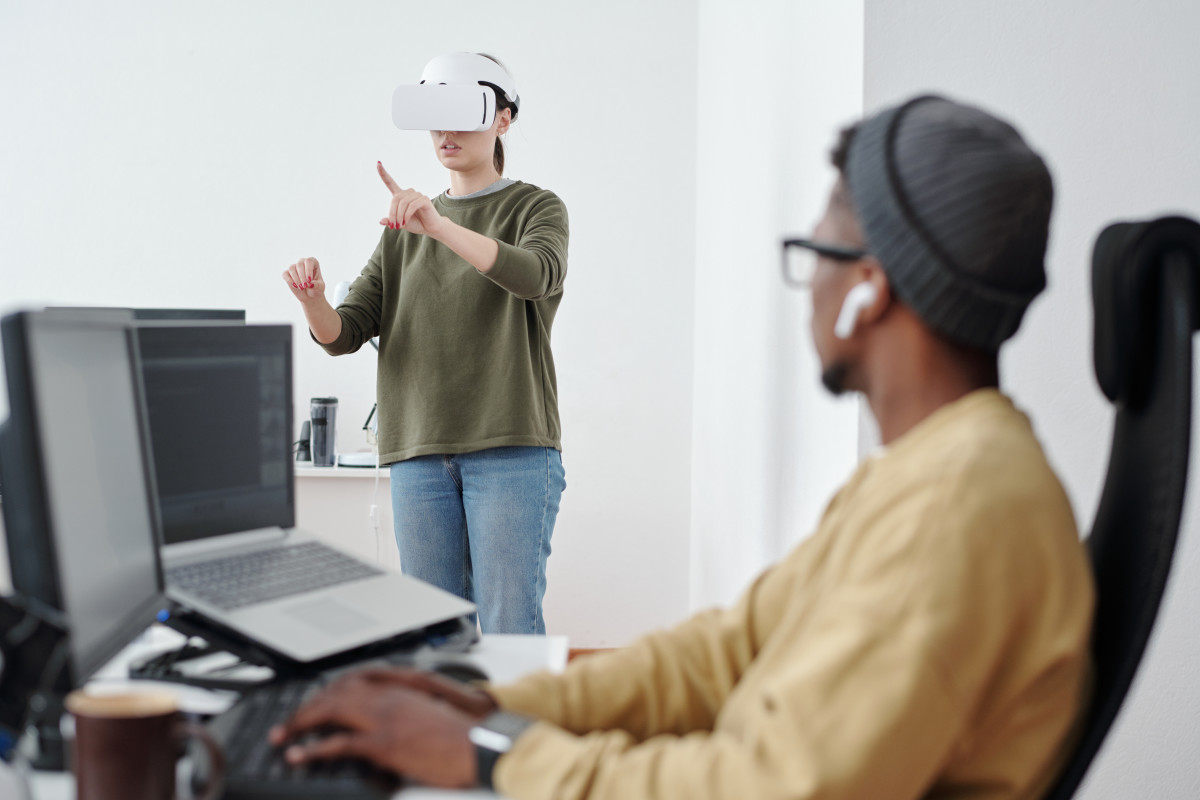
Combining internet of things (IoT) and extended reality (XR) technologies is providing new opportunities for businesses through the form of digital twins. A digital twin is an application that enables a user to interact with a digital representation of a physical object, system, or environment using an extended reality headset, like Microsoft’s Hololens.
Imagine walking around a factory and seeing the status of each machine you walk past displayed in the air next to it. If you are interested in more details about a particular machine, you can drill into relevant data streams related to that machine, interact with a 3D model of it, and examine individual components of the machine, all using intuitive hand gestures.
Digital twins make it possible to get an unprecedented level of detail and insight about the status of a system using real-time data streams from devices within the system. It can seem like a daunting and complex task to model and create such an application. Especially for businesses that already have ways to track parts of their systems, it might not be obvious why it is worth it to devote the time and resources to create an application like this. So how does a digital twin provide value?
The Value of a Digital Twin
Here are four ways a digital twin can provide value to your business:
Explore data with an intuitive interface; utilize a spatially accurate model of the system.
Examine the state of a system in the past.
Simulate the effects of different changes to the system; model the future.
Increase the effectiveness of predictive maintenance.
1. Intuitive Interface
Users can interact with a digital twin by examining a 3D model of the system. Data about the objects in the system can be displayed in space near the objects. Interfaces involving hand gestures and the direction of eye gaze can allow someone to manipulate the digital twin by rotating and zooming in and out on different parts to see information in context. The digital representation can be miniature, enabling someone to zoom out and see a large space and objects of interest like machines on an assembly line from a bird’s-eye view.
Zoomed-in views are also possible, allowing examination of individual parts at different angles. Digital twins can also be spatially accurate. A user can walk around a factory and see data, alerts, and messages relating to machines in their vicinity. These views of data can help make it easier to analyze what is happening right now and prioritize issues.
2. Examine the Past
It can be useful to look back in time to a representation of the system in a past state. You can look back to the time when a problem first began and see if anything else is out of the ordinary at the same time, or you can see if the problem correlates with any changes to the system. Examining a spatially accurate model of a system at a particular time can be much more insightful than the text-based logs of system components many people are very familiar with.
3. Model the Future
A digital twin can be used to simulate what will happen in the future. Simulating the impact of making a change to a system can save time and resources, which makes it possible to try multiple solutions before deciding what to do in the real version of the modeled system. It is also possible to model degradations in performance that can be expected from normal wear and tear and see how the system behaves and performs as a result. This makes predictive maintenance much more effective and valuable.
4. Predictive Maintenance
When preventative maintenance tasks are done on a schedule, the task is likely to be done prematurely. The alternative is to wait until the problem manifests as broken machinery or being out of commission until getting a replacement part. Unplanned down time is likely much worse than premature repairs, but neither is close to optimal. Using data from sensors that keep you informed of the status of the system, you can better analyze whether a repair may need to happen.
Artificial intelligence algorithms can deliver even greater value by using the data to make predictions about when a part needs to be replaced that is much closer to the time the part will actually wear out, so you can get more use out of it and go longer without needing to spend the time to repair. It is also easier to have the parts you need ahead of time if you buy replacements based on predictions resulting from the data feeds of the digital twin.
Take Advantage of Technology to Transform
Though many of the technologies that make these things possible have existed for years, the scalability and cost advantages of cloud-based IoT are improving, and at the same time the cost and performance of relevant hardware is also improving. Tool suites like Microsoft’s Azure and Amazon Web Services have created services and technologies that make it a possibility for many more people and situations. Now is a great time to take advantage of the available technology to transform your business with unprecedented abilities to track, analyze, and predict.
Reach out to marketing@credera.com to learn more.
Contact Us
Ready to achieve your vision? We're here to help.
We'd love to start a conversation. Fill out the form and we'll connect you with the right person.
Searching for a new career?
View job openings



